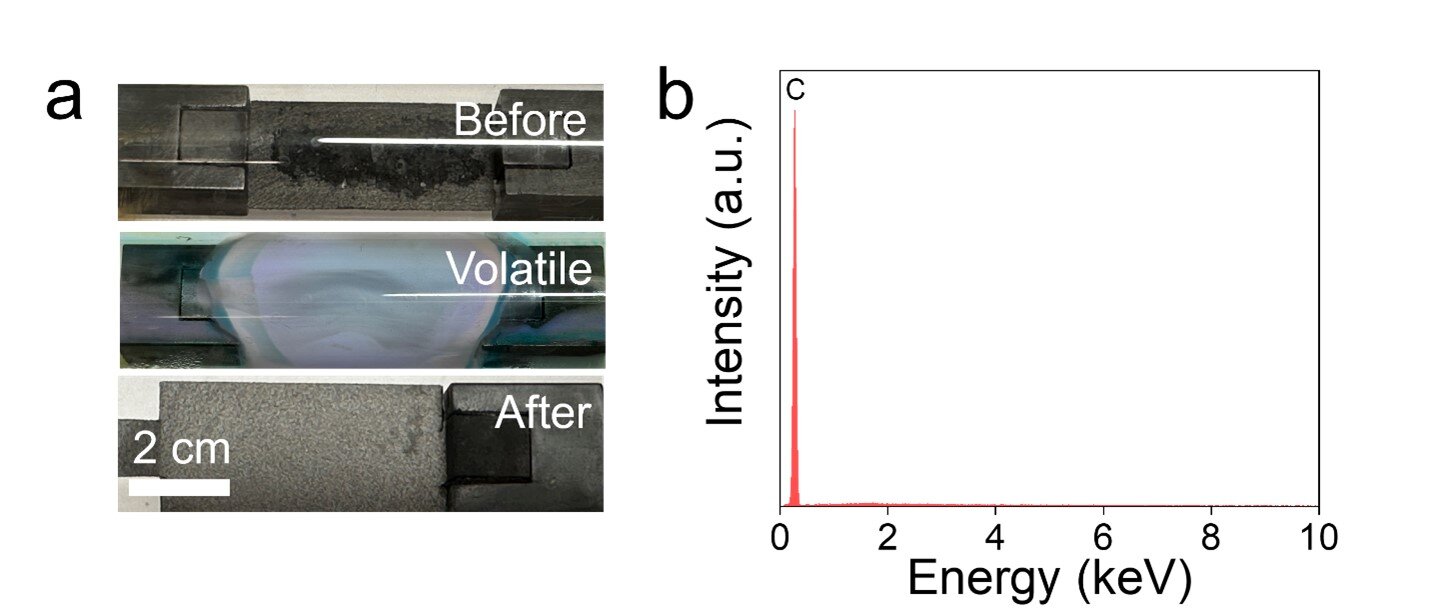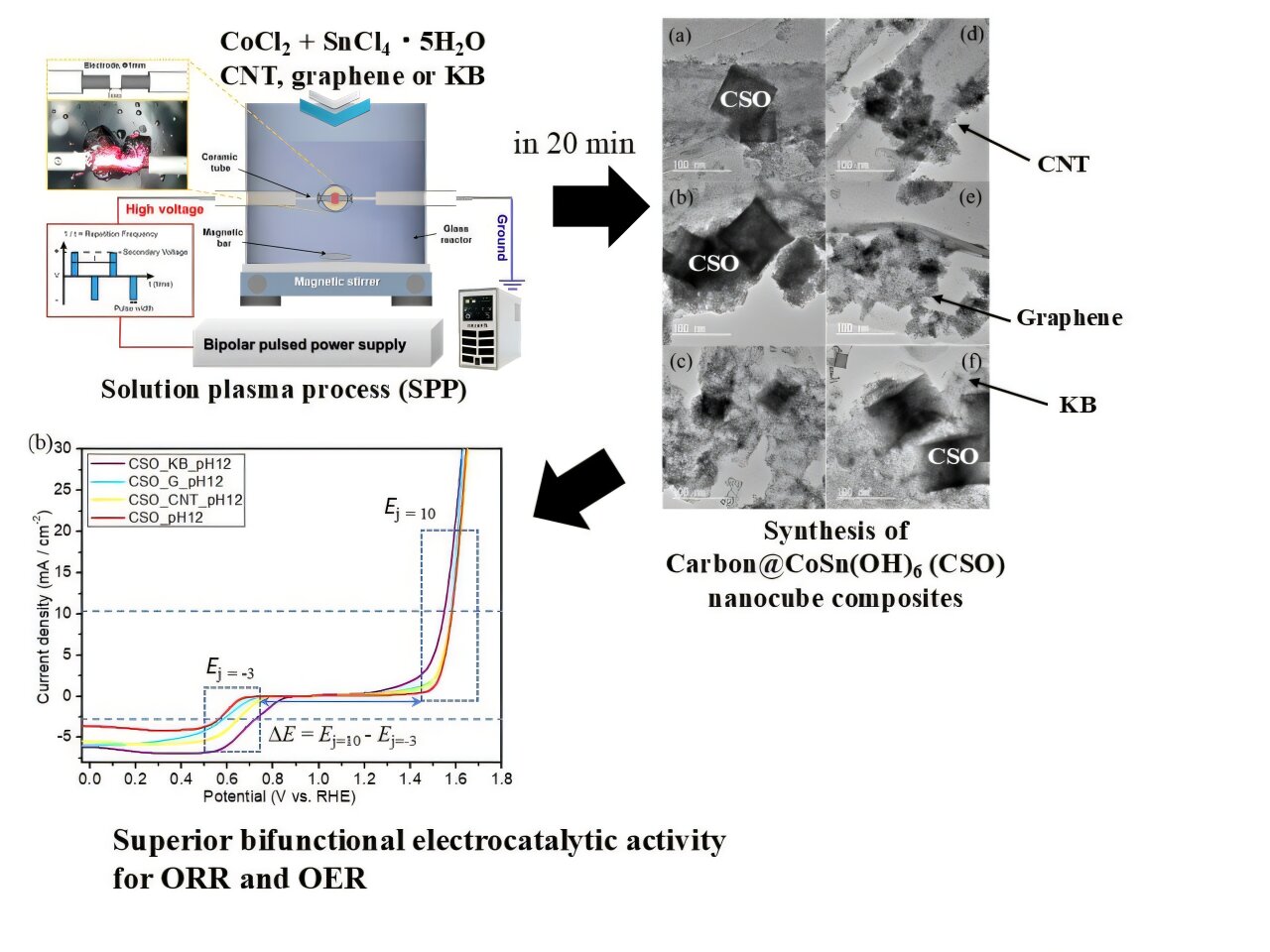Tech
Technology innovation drives accountancy job changes | Computer Weekly

Services provided by accountants can help small business owners manage cash flow better, a study commission by Intuit Software has reported, but the role of accounting is changing as more technologies such as artificial intelligence (AI) are embedded into accounting software packages.
The study, conducted by Chris Brauer, director of innovation in the Institute of Management Studies (IMS) at Goldsmiths, University of London, Symmetry Research and the Association of Chartered Certified Accountants (ACCA), noted that there is a substantial opportunity for both SMEs and accountants to drive meaningful economic impact.
Based on a survey of 4,000 small and mid-sized businesses, the study reported that 71% of the businesses polled agree that professional accounting services improve cash flow management, which makes both current and future business decision-making run more smoothly. In addition, 73.1% said that using professional accounting services has strengthened their financial reporting, and this alone has offered increasing opportunities to get bank loans or government grants.
Around 80% of SME leaders who have used an accountant said it has had either a moderate, significant or transformational effect on their financial literacy. Accountants can also serve an integral role as strategic financial advisors, counselling on business planning, tax compliance and financial management. Among the challenges facing the accounting profession is that the trajectory AI is taking may well remove much of the work they need to do in terms of how small business owners manage their finances.
Marianna Tressel, executive vice-president at Intuit, believes the way AI changes business is just getting started, adding: “We’re just at the beginning, at the first few innings of what will be possible with AI and how people use AI.”
According to Tressel, AI is an accelerant in everybody’s work: “We were talking to a lot of small businesses about how they use AI for all sorts of elements of their work. It’s an accelerant, but also it’s a disruptor.”
Tressel believes conversational AI powered by a custom large model changes human computer interaction and this is something Intuit has begun doing, with a custom LLM based on open source technology, which, she said, can handle queries extremely cost effectively. This potentially has an impact on the role of an accountant.
Aaron Patrick, head of accounts at the UK-based cloud accountancy firm Boffix, said: “If we’re really honest, accountants and bookkeepers are starting to become less relevant.” However, for Patrick, there is now an opportunity for accountants and book keepers to become business advisers and start helping clients by showing value to their clients.
“Niche expertise is becoming a game changer for accountants. By specialising in specific sectors [such as] e-commerce, we can offer tailored advice that directly impacts a client’s success. Coupled with proactive communication, we’re not just checking boxes anymore – we’re building long-term relationships where we actively help SMEs make strategic decisions, thrive, and grow.”
For Intuit customers, this opportunity is made possible through its $12bn acquisition of MailChimp in 2021. The developer of QuickBooks used the acquisition as an opportunity to re-engineer its applications as a new platform.
In October, Intuit launched Intuit Accountant Suite, an AI-native platform, which the company claims provides accounting firms with the tools they need to scale and manage their clients, firms and teams, all in one place.
Discussing how the technology that is built into the new Intuit platform changes the role of an accountant, Patrick said: “We now have an opportunity to understand why sales has gone up or why expenses has gone down.”
According to Patrick, the new Intuit platform provides access to data silos: “As accountants, we’re going to have the opportunity not only to be able to tell the story based on the numbers, but understand what’s happened with the CRM system, such as assess how a company’s marketing is going.”
Tech
WIRED Roundup: Fandom in Politics, Zuckerberg’s Illegal School, and Nepal’s Discord Revolution

Leah Feiger: Zoë, I am obsessed with this story. Before you continue, I think that it’s really important to say that Caroline, the lovely reporter of this story on your business desk, obtained 1,665 pages of documents about the dispute about Zuckerberg’s house. This story is canon now.
Zoë Schiffer: Caroline Haskins is a complete star. Our fact-checking team literally cried when I asked them. They were like, “Wait, sorry, how many documents are we looking through?” I was like, “Yes.”
Leah Feiger: Shout out to the WIRED research team.
Zoë Schiffer: Absolutely. The school, I think we just have to say, is named after one of the Zuckerberg family chickens. It’s called the Bicken Ben School.
Leah Feiger: I mean, hearing you say this, it’s, I know you’re being serious, but again.
Zoë Schiffer: So, the Crescent City neighborhood in Palo Alto, where the Zuckerbergs live, as you can imagine, is some of the best real estate in the entire country. It’s filled with these gorgeous homes, a ton of greenery. Mark Zuckerberg has been expanding his presence throughout the years in this ultra fancy neighborhood. The plot of land that the Zuckerbergs live on has expanded to include 11 previously separate properties. This is so funny and just such a nightmare. If you’re living on the street, you paid whatever, $5 million for your house, and suddenly all of your neighbors are Mark Zuckerberg.
Leah Feiger: Important to note that not all of them are connecting either. I don’t totally understand what that means. Do they walk through a neighbor’s porch to get to their horse’s pool? What does this entail?
Zoë Schiffer: We have more questions. We have to Google Earth this. I think there’s some holes in this story that we need to fill in. The expansion first became a concern for Mark Zuckerberg’s neighbors, back in 2016, due to fears that his purchases were driving up the market pretty dramatically. But then, about five years later, neighbors started noticing that a school appeared to be operating out of the Zuckerberg compound. So, this is illegal to do without a permit, at least under the area’s residential zoning code. And so, naturally, the neighbors started to alert the city. Caroline Haskins, the reporter on the story, obtained over a thousand documents, like you said, outlining the resulting fight between the neighbors and the city authorities, basically arguing that, it felt to them like the Zuckerbergs were getting special treatment.
Tech
Two-step flash Joule heating method recovers lithium‑ion battery materials quickly and cleanly

A research team at Rice University led by James Tour has developed a two-step flash Joule heating-chlorination and oxidation (FJH-ClO) process that rapidly separates lithium and transition metals from spent lithium-ion batteries. The method provides an acid-free, energy-saving alternative to conventional recycling techniques, a breakthrough that aligns with the surging global demand for batteries used in electric vehicles and portable electronics.
Published in Advanced Materials, this research could transform the recovery of critical battery materials. Traditional recycling methods are often energy intensive, generate wastewater and frequently require harsh chemicals. In contrast, the FJH-ClO process achieves high yields and purity of lithium, cobalt and graphite while reducing energy consumption, chemical usage and costs.
“We designed the FJH-ClO process to challenge the notion that battery recycling must rely on acid leaching,” said Tour, the T.T. and W.F. Chao Professor of Chemistry and professor of materials science and nanoengineering. “FJH-ClO is a fast, precise way to extract valuable materials without damaging them or harming the environment.”
Quick, controlled heating
The rapid increase in the use of lithium-ion batteries in electric vehicles and consumer electronics has intensified the need for sustainable recycling technologies. Existing recycling methods are often costly and inefficient while producing significant amounts of wastewater.
To tackle these challenges, the research team developed a two-step process that uses brief bursts of heat and air instead of harsh chemicals. First, the battery materials are briefly heated with chlorine gas, which breaks them down. They then undergo a second heating in air, transforming most of the metals into forms that can be separated from lithium. Because lithium does not form an oxide as easily as other metals, it remains as the chloride, which can be easily extracted using water.
Previous methods required lengthy processes and strong acids. The FJH-ClO approach, however, uses fast, controlled heating and simple reactions to make the separation process cleaner and faster.
Holistic recovery
Tests have shown that the new process can recover nearly all valuable materials from used batteries, including lithium, cobalt and graphite, with high purity. Early analyses suggest that even at a small scale, it may require about half as much energy, 95% fewer chemicals and significantly lower costs compared to existing methods.
These results establish a scalable, acid-free approach for the comprehensive recovery of lithium-ion battery materials, offering both environmental and economic advantages while setting a new standard for sustainable battery recycling.
“It’s rewarding to see a process that’s both scientifically sound and practically useful,” said Shichen Xu, the study’s first author and a Rice postdoctoral researcher. “That balance is what makes real-world impact possible.”
Future implications
This process paves the way for large-scale implementation and integration into the battery supply chain. It provides a foundation for recovering valuable materials while reducing the need for virgin mining.
With the FJH-ClO process already proven at the laboratory scale, the researchers plan to scale the process through their startup, Flash Metals U.S., a division of Metallium Ltd.
“This is more than just a lab experiment,” Tour said. “It’s a blueprint for how the industry can meet the demand for battery materials without further straining the planet.”
Co-authors of this study include Justin Sharp, Qiming Liu, Jaeho Shin, Haoxin Ye, Kaiwen Yang, Carter Kittrell, Haojie Zhu, Carolyn Teng, Bowen Li, Shihui Chen and Karla Silva from Rice’s Department of Chemistry; Ralph Abdel Nour from its Applied Physics Program and Smalley-Curl Institute; and Khalil JeBailey, Boris Yakobson and Yufeng Zhao from its Department of Materials Science and NanoEngineering.
More information:
Shichen Xu et al, Holistic Recovery of Spent Lithium‐Ion Batteries by Flash Joule Heating, Advanced Materials (2025). DOI: 10.1002/adma.202517293
Citation:
Two-step flash Joule heating method recovers lithium‑ion battery materials quickly and cleanly (2025, November 17)
retrieved 17 November 2025
from https://techxplore.com/news/2025-11-joule-method-recovers-lithiumion-battery.html
This document is subject to copyright. Apart from any fair dealing for the purpose of private study or research, no
part may be reproduced without the written permission. The content is provided for information purposes only.
Tech
Plasma-based method creates efficient, low-cost catalysts for metal–air batteries

Due to the intense global impact of fossil fuel overuse on air quality and climate, the search for advanced clean energy solutions has become critical. Metal–air batteries offer a game-changing alternative, holding the potential to replace combustion engines in various applications.
By electrochemically converting oxygen from the air into power, these batteries achieve theoretical energy densities up to twelve times higher than lithium-ion cells, delivering unprecedented efficiency with zero operational emissions.
Challenges facing metal–air battery adoption
Despite their theoretical advantages, metal–air batteries have yet to achieve widespread commercial viability due to several critical obstacles. Current high-performance catalysts primarily depend on expensive precious metals, such as platinum and ruthenium, rendering them economically unfeasible for mass production and large-scale deployment.
Furthermore, most existing catalyst materials are monofunctional, efficiently driving only one of the two essential electrochemical processes—the oxygen reduction reaction (ORR) or the oxygen evolution reaction (OER)—but not both.
Compounding these issues, the complex, multi-step synthesis processes required for these catalysts inflate manufacturing costs and severely restrict scalability.
Innovative research tackles catalyst limitations
Against this backdrop, a research team led by Professor Takahiro Ishizaki from the College of Engineering at Shibaura Institute of Technology, Japan, and Assistant Professor Sangwoo Chae from Nagoya University, Japan, has been working hard to find appropriate solutions to these issues.
In their latest study, published in Sustainable Energy & Fuels, they report a revolutionary single-step method for creating highly effective bifunctional catalysts using abundant, low-cost materials.
The researchers utilized the recently pioneered solution plasma process (SPP) for the synthesis, successfully creating cobalt-tin hydroxide (CoSn(OH)6) composites anchored to various carbon supports. This is a critical distinction from conventional catalyst synthesis: unlike traditional, multi-step methods that require surfactants and extensive post-processing, SPP enables rapid, single-step synthesis at room temperature under ambient atmospheric conditions.
This plasma-based approach not only confers unique surface properties that significantly boost catalytic activity but also dramatically slashes manufacturing complexity and production costs.
The research team systematically produced catalysts with varied compositions and carbon structures, rigorously testing their bifunctional performance in both the oxygen reduction (ORR) and oxygen evolution (OER) reactions—the two pivotal processes determining overall battery efficiency.
Their best-performing catalyst, combining CoSn(OH)6 with Ketjen Black carbon, achieved remarkable results. For oxygen evolution, it outperformed the industry-standard ruthenium oxide catalyst, requiring lower voltages to achieve the same current densities. In oxygen reduction, it exhibited performance comparable to much more expensive platinum-based catalysts while relying solely on abundant materials.
Moreover, this new catalyst proved to be quite durable, as Prof. Ishizaki says, “Our advanced CoSn(OH)6–Ketjen Black composite exhibited exceptional long-term stability, maintaining its superior oxygen evolution performance for over 12 hours without degradation, a crucial factor for real-world battery applications.”
Notably, the catalyst’s ability to efficiently catalyze both required reactions represents a significant advancement in the field. The researchers measured a potential gap of just 0.835 V between the two reactions, thus enabling highly efficient energy conversion. This dual functionality eliminates the need for separate catalysts, further reducing system complexity and costs.
Detailed analysis confirms that the superior catalytic performance stems from powerful synergistic interactions between the (CoSn(OH)6) nanoparticles and the carbon support.
The researchers discovered that the SPP synthesis process is key: it ensures a uniform distribution of active nanoparticles across the carbon surface, which maximizes the exposure of catalytic sites while simultaneously guaranteeing excellent electrical conductivity.
Furthermore, the method offers precise control over particle size and crucial surface properties, allowing for systematic optimization of catalytic activity.
“This breakthrough holds profound potential to customize and manufacture high-performance, durable, and low-cost bifunctional electrocatalysts for critical energy conversion systems,” highlights Prof. Ishizaki. “It offers a truly sustainable material alternative to commercially used precious metal-based catalysts.”
Implications for energy storage and industry
The implications of this work are far-reaching, promising a revolution across the energy sector. Metal–air batteries powered by these newly developed catalysts could fundamentally transform energy storage for electric vehicles, offering a significantly longer range and faster charging capabilities while simultaneously reducing overall costs.
Furthermore, the technology holds immense potential for grid-scale energy storage, which is crucial for the efficient integration of intermittent renewable sources like solar and wind power into electrical networks. The proposed single-step synthesis method offers equally profound industrial advantages.
By eliminating complex, multi-step processing and reliance on expensive raw materials, manufacturers can produce these high-performing catalysts at a fraction of the current cost. Moreover, the ability to synthesize these materials under ambient conditions drastically reduces energy consumption and environmental impact compared to conventional high-temperature, high-pressure methods currently used in battery and catalyst production.
Overall, this research represents a crucial and transformative step toward achieving economically viable clean energy storage on a global scale, poised to significantly accelerate the essential transition away from fossil fuels in the transportation and energy sectors.
More information:
Sangwoo Chae et al, Single-step solution plasma synthesis of bifunctional CoSn(OH)6–carbon composite electrocatalysts for oxygen evolution and oxygen reduction reactions, Sustainable Energy & Fuels (2025). DOI: 10.1039/d5se00370a
Citation:
Plasma-based method creates efficient, low-cost catalysts for metal–air batteries (2025, November 17)
retrieved 17 November 2025
from https://techxplore.com/news/2025-11-plasma-based-method-efficient-catalysts.html
This document is subject to copyright. Apart from any fair dealing for the purpose of private study or research, no
part may be reproduced without the written permission. The content is provided for information purposes only.
-

 Tech1 week ago
Tech1 week agoFrom waste to asset: Turning ethanol production CO₂ into jet fuel
-

 Tech2 days ago
Tech2 days agoNew carbon capture method uses water and pressure to remove CO₂ from emissions at half current costs
-

 Politics4 days ago
Politics4 days agoBritish-Pakistani honoured for transforming UK halal meat industry
-

 Sports2 days ago
Sports2 days agoTexas A&M officer scolds South Carolina wide receiver after touchdown; department speaks out
-
Sports1 week ago
College football winners and losers: The catch of the year saves Indiana
-

 Business1 week ago
Business1 week agoMore than 1,000 flights cancelled as US air traffic cuts enter second day
-

 Tech4 days ago
Tech4 days ago$25 Off Exclusive Blue Apron Coupon for November 2025
-

 Tech1 week ago
Tech1 week agoSecurity flaws in portable genetic sequencers risk leaking private DNA data






